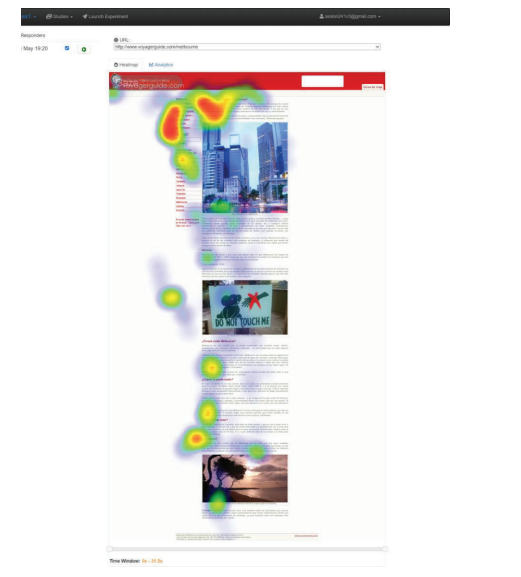The main objective of this Final Degree Project is to carry out a study of the web
visualization patterns identified to date. In addition, as part of this study, a
series of tests are conducted to check the current validity of these patterns.
The structure of the project is divided into a theoretical part and a practical part.
First, the theoretical part begins with an introduction to the eye-tracking
technology that makes it possible to identify the visualization patterns. In
chapter 3 of this theoretical part, all the information gathered on web
visualization pattern studies is presented. Particularly relevant is the study
conducted by Norman Nielsen Group in 2009 [7], which establishes the basis
for this project. The relevance of Nielsen’s research becomes evident in section
3.2, where all the characteristics of the patterns identified are explained in
detail: f pattern, bypassing pattern, layer cake pattern, spotted pattern and
commitment pattern.
Subsequently, a classification of the web pages is made with the purpose of
identifying the main display patterns that take place in each category. Two of
these categories (Newspapers, articles and blogs; and Search engines) are the
ones analysed in the studies conducted by Nielsen, and for this reason they are
studied in the practical part of the project.
This practical part begins in chapter 4 with the explanation of the tool that will
be used to develop the tests. This is followed by an explanation of the
methodology followed for the tests and its justification.
On the one hand, the tests performed aim to find out whether Nielsen’s patterns
are still reproducible on web pages with the same appearance as those used for
their experiments. On the other hand, the tests also seek to check the validity
of these patterns in web pages with more current and modern formats.
Finally, the results obtained in the tests, the main conclusions derived from
them, and the personal evaluation of the project developed are discussed.

In the practical aspect of this project, we utilized a tool known as GazeRecorder1. This software, designed for eye-tracking, is conveniently accessible online via a browser, but also offers a desktop version for those who prefer it. The decision to use this particular tool was influenced by the recommendation of Ekaterina Estévez [23]. Her thesis aimed to explore and compare various eye-tracking programs for the purpose of conducting studies similar to ours. After extensive testing, she concluded that this program, specifically its online version, was the most suitable for our work. The user-friendly interface of the online version of GazeRecorder1, as depicted in illustration 28, is both simple and intuitive. It provides the capability to establish multiple studies, designate the web page for eye tracking, and set a recording time limit.